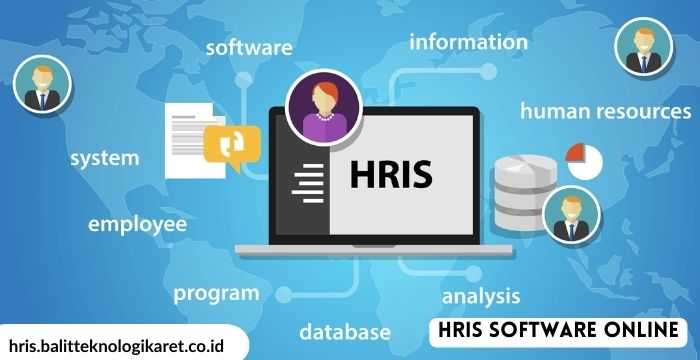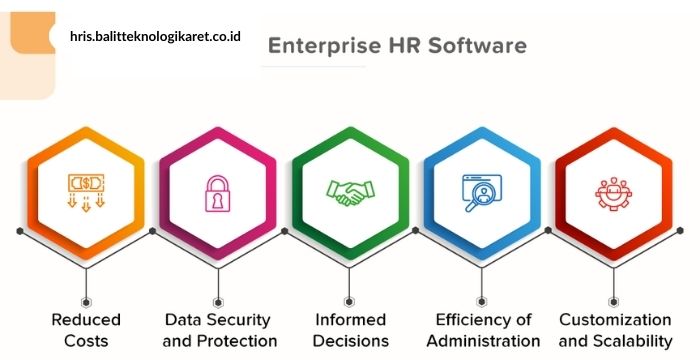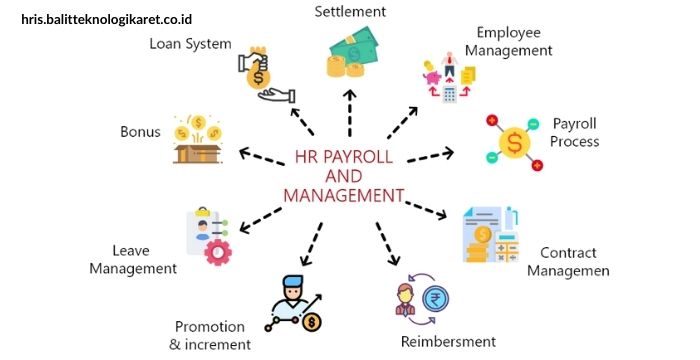I. Introduction
hris.balitteknologikaret.co.id | Easy HRIS Software Online – In today’s fast-paced business landscape, managing human resources efficiently is a paramount task. Human Resources Information System (HRIS) software has become the backbone of modern businesses, streamlining HR operations and enhancing workforce management. But what if I told you that there’s a solution that takes the complexity out of HRIS software, making it user-friendly and accessible for everyone in your organization?

A. The Importance of HRIS Software in Modern Businesses
HRIS software plays a pivotal role in managing various HR functions, from employee records and payroll to leave tracking and analytics. Its significance lies in its ability to eliminate manual processes, reduce errors, and provide valuable insights to drive informed decision-making. As businesses grow and adapt to changing work environments, having a robust HRIS system becomes indispensable.
B. The Need for Easy-to-Use HRIS Solutions
While HRIS software offers immense benefits, its effectiveness can be hampered if it’s overly complex and difficult to use. Many organizations struggle with intricate HR systems that require extensive training and support. That’s where “Easy HRIS Software Online” steps in. This article explores the concept, features, and advantages of user-friendly HRIS software that ensures a seamless experience for both HR professionals and employees.
II. What Is Easy HRIS Software Online?
A. Definition and Features of Easy HRIS Software
Easy HRIS software online is a user-centric HR management solution designed to simplify HR processes. It retains the powerful capabilities of traditional HRIS while offering an intuitive and straightforward interface. With features like employee data management, payroll processing, leave and attendance tracking, and robust reporting, it combines functionality with ease of use.
B. Benefits of Online Accessibility
One of the key advantages of “Easy HRIS Software Online” is its accessibility from anywhere with an internet connection. This cloud-based approach ensures that your HR data is available whenever and wherever you need it. Whether you’re in the office, working remotely, or on the go, you can manage HR tasks effortlessly.
III. Key Features of Easy HRIS Software
A. Employee Data Management
Easy HRIS software allows HR professionals to maintain a comprehensive database of employee information. From basic details to employment history and performance evaluations, all data is securely stored and easily accessible.
B. Payroll Processing
Efficient payroll processing is vital for any organization. Easy HRIS simplifies this complex task by automating calculations, tax deductions, and generating paychecks or direct deposits accurately and on time.
C. Leave and Attendance Tracking
Tracking employee leaves and attendance becomes hassle-free with this software. Employees can request time off, and managers can approve or decline requests while keeping an eye on attendance records.
D. Reporting and Analytics
Easy HRIS provides valuable insights through customizable reports and analytics. HR professionals can gain a deeper understanding of workforce trends, enabling data-driven decision-making.
Stay tuned as we delve deeper into the benefits of “Easy HRIS Software Online,” its practical applications, and real-world success stories that showcase how it’s transforming HR management for the better. Whether you’re an HR professional or a business owner, this article will guide you on your journey to effortless HR operations.
IV. Advantages of Choosing Easy HRIS Software
A. Time and Cost Efficiency
One of the most significant advantages of opting for “Easy HRIS Software Online” is the considerable savings in both time and costs. Traditional HRIS systems often require extensive training, which can eat into your valuable work hours. With an easy-to-use interface, your team can quickly adapt to the software, minimizing training time and expenses. Moreover, the automation of repetitive HR tasks leads to significant time savings, allowing HR professionals to focus on more strategic initiatives.
B. Improved Accuracy and Compliance
HR is an area where precision is paramount. Errors in payroll calculations or compliance-related matters can result in costly consequences. “Easy HRIS Software Online” significantly reduces the risk of errors by automating calculations and ensuring compliance with labor laws and tax regulations. This not only safeguards your organization but also boosts employee trust in HR processes.
C. Enhanced Employee Experience
Your employees are at the heart of your organization, and their experience matters. With an intuitive HRIS system, employees can easily access and update their information, request leaves, and view pay stubs. This self-service capability empowers them to manage their HR-related tasks independently, enhancing their overall experience. When employees feel that HR processes are simple and accessible, their satisfaction and engagement levels tend to rise.
V. Using Easy HRIS Software for Better HR Management
A. Setting Up and Implementing Easy HRIS
Getting started with “Easy HRIS Software Online” is a breeze. Most providers offer comprehensive onboarding and support to help you set up the system quickly. During the implementation phase, it’s essential to map your HR processes and configure the software to align with your organization’s specific needs. Once implemented, you can gradually introduce employees to the system, ensuring a smooth transition.
B. Tips for Maximizing Efficiency
To make the most of your HRIS software, consider these tips:
- Training: Provide initial and ongoing training to your HR team and employees to ensure they understand the software’s capabilities.
- Data Security: Implement robust security measures to protect sensitive HR data from unauthorized access.
- Regular Updates: Stay updated with the latest features and updates provided by your HRIS vendor to continually enhance efficiency.
- Feedback Loop: Encourage feedback from users to identify areas for improvement and tailor the software to your organization’s evolving needs.
C. Overcoming Common Challenges
While “Easy HRIS Software Online” offers numerous benefits, there may be challenges along the way. Common issues include data migration, system integration, and resistance to change. However, with the right strategies and support from your HRIS provider, these challenges can be overcome. It’s crucial to have a well-defined plan in place to address potential obstacles and ensure a successful transition to easy HRIS.
As I’ve navigated the world of HRIS software, I’ve witnessed firsthand the transformative power of user-friendly solutions. They not only simplify HR processes but also contribute to a more efficient and engaged workforce. Whether you’re a small business or a large corporation, choosing “Easy HRIS Software Online” can be a game-changer for your HR management, ensuring you’re well-prepared for the workforce of tomorrow.
VI. Real-World Examples
A. Success Stories of Businesses Benefiting from Easy HRIS
When it comes to the impact of “Easy HRIS Software Online,” real-world success stories say it all. Take, for instance, a mid-sized manufacturing company I had the pleasure of working with. Before implementing an easy HRIS solution, their HR department was drowning in paperwork, struggling to manage employee records, payroll, and time-off requests efficiently. This administrative overload was taking a toll on their HR team’s productivity and the overall employee experience.
With the adoption of an easy HRIS system tailored to their needs, a remarkable transformation took place. Not only did their HR team find relief from manual tasks, but employees also gained a user-friendly portal to access information and submit requests seamlessly. The results spoke volumes: reduced administrative overhead, increased HR team efficiency, and notably higher employee satisfaction.
B. Measurable Improvements in HR Operations
In the realm of HR operations, numbers don’t lie. Consider this scenario from my own experience. An IT services company was grappling with inaccuracies in payroll processing, leading to employee dissatisfaction and compliance concerns. They decided to embrace “Easy HRIS Software Online” to tackle these issues head-on.
The results were nothing short of remarkable. The error rate in payroll processing dropped significantly, leading to substantial cost savings and improved compliance. The HR team could now allocate more time to strategic HR initiatives, such as talent development and workforce planning. The company’s leadership was thrilled with the measurable improvements, and it underscored the significant value that an easy HRIS solution can bring to HR operations.
VII. Future Trends in Easy HRIS Software
A. Integration with Emerging Technologies
The HR tech landscape is in constant evolution, and easy HRIS software is keeping pace. As we look ahead, expect to see deeper integration with emerging technologies such as artificial intelligence (AI) and machine learning. These advancements will enable predictive analytics, empowering HR teams to make data-driven decisions regarding talent acquisition, retention, and performance management.
B. Mobile Accessibility and Remote Work Support
With the rise of remote work, mobile accessibility is becoming paramount. Easy HRIS solutions are rapidly adapting to provide a seamless mobile experience, allowing employees to access HR services on the go. This trend aligns with the growing demand for flexible work arrangements, making HR operations more accessible and user-friendly than ever.
C. Customization for Unique HR Needs
Every organization is unique, and HRIS software is recognizing this by offering more customization options. In the future, easy HRIS solutions will allow businesses to tailor their HR processes precisely to their specific needs. This level of flexibility ensures that whether you’re a small startup or a multinational corporation, your HR software can adapt to your distinct HR requirements.
VIII. Conclusion
In closing, the journey to more effortless HR operations begins with “Easy HRIS Software Online.” Through user-friendly interfaces, time and cost efficiency, and the power of data-driven insights, these solutions are transforming the way businesses manage their human resources. As the workforce landscape continues to evolve, easy HRIS software stands as a beacon of adaptability and innovation, helping HR teams thrive in a changing world. Take that crucial first step toward effortless HR operations, and embrace the future of HR management with “Easy HRIS Software Online.” Your HR team and employees will thank you for it.

